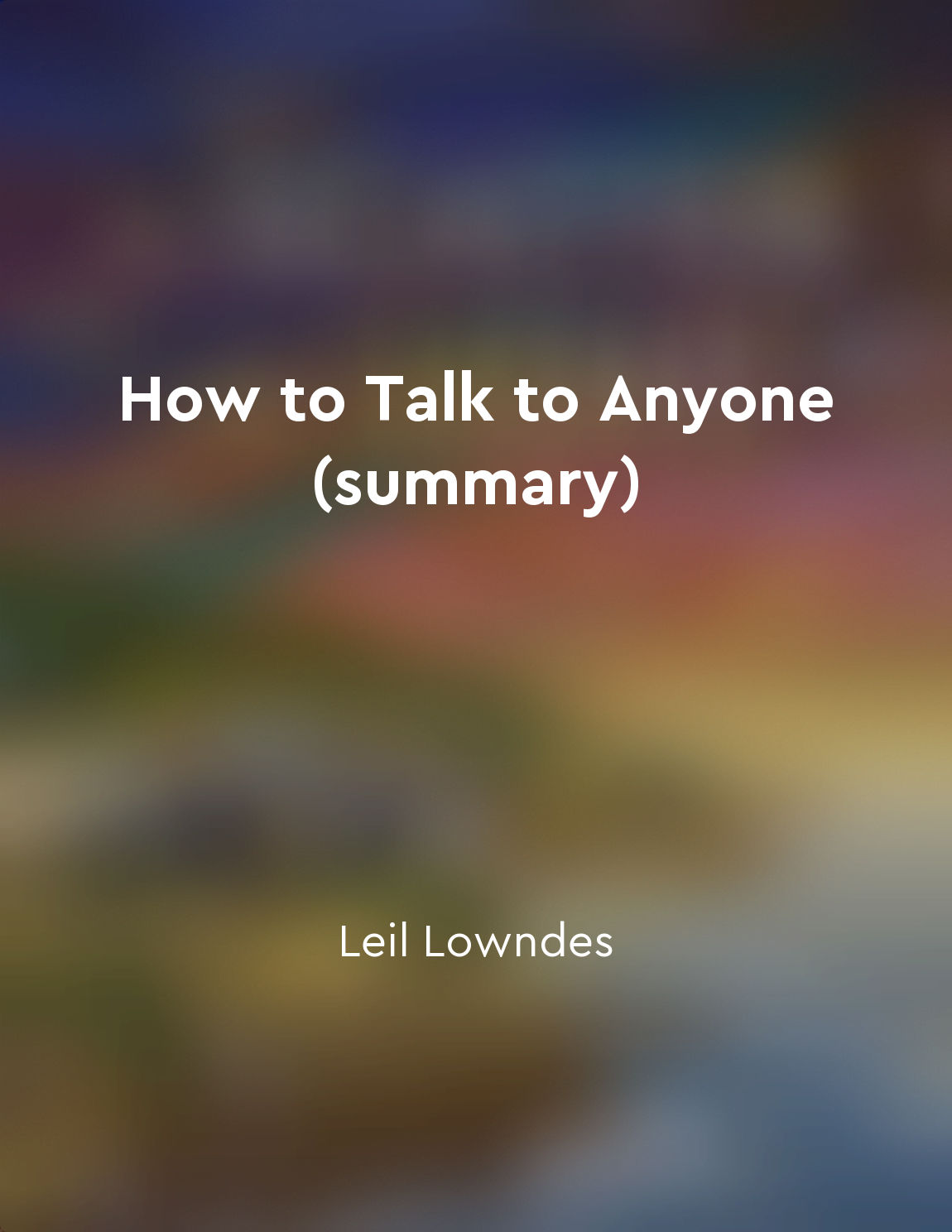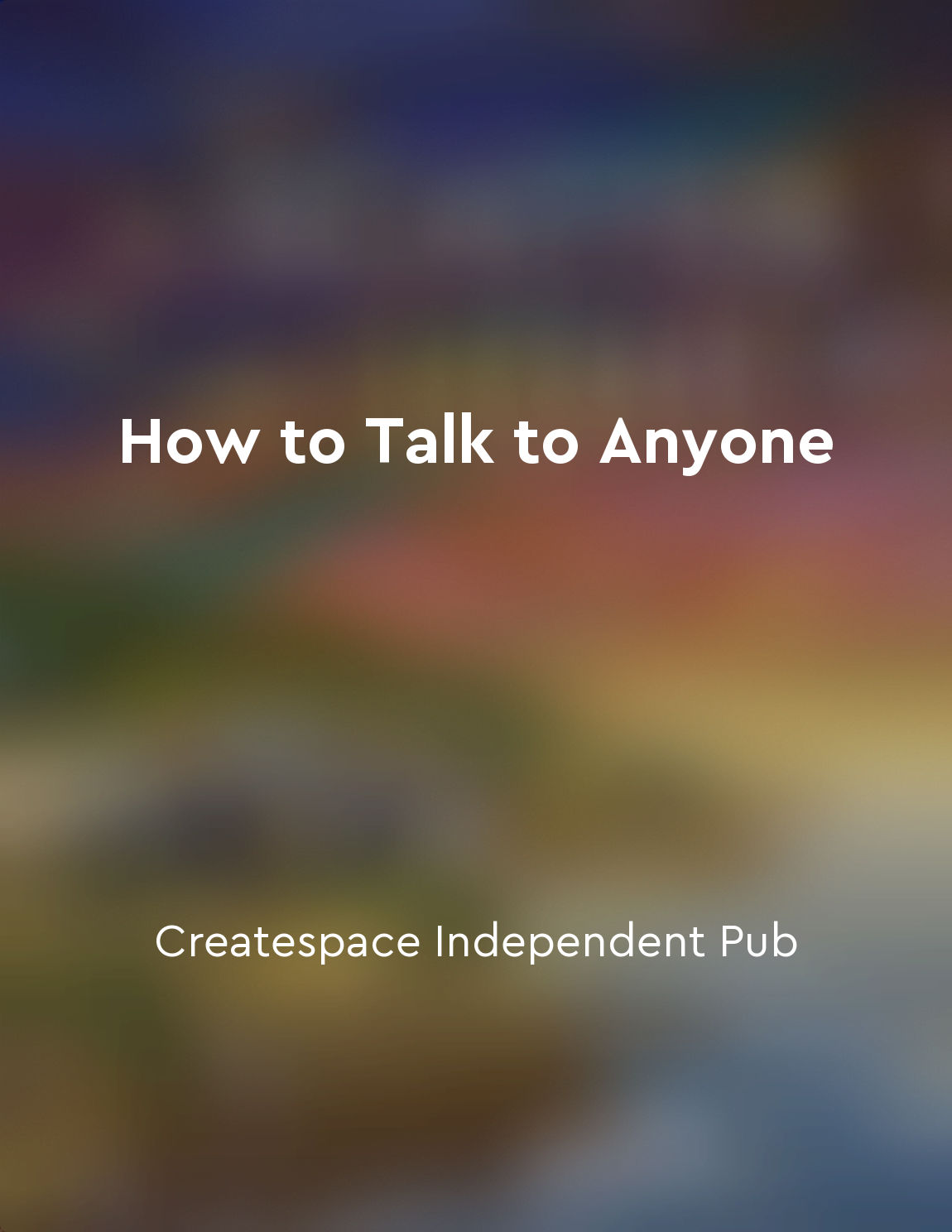Audio available in app
Eye contact is a powerful form of nonverbal communication from "summary" of Linguagem Corporal by Bill Eady
Eye contact is a fundamental aspect of human interaction that can convey a multitude of messages without saying a single word. The eyes are often referred to as the windows to the soul, as they can reveal a person's true emotions, intentions, and thoughts. When someone makes eye contact with another person, they are engaging in a form of nonverbal communication that can establish a connection, convey respect, and express interest. In his book "Linguagem Corporal," Bill Eady emphasizes the importance of eye contact in communication, stating that it is a powerful tool that can influence how a message is perceived. When someone maintains eye contact while speaking, they are seen as confident, trustworthy, and sincere. On the other hand, avoiding eye contact can be interpreted as dishonesty, disinterest, or lack of confidence. Eye contact can also play a crucial role in establishing rapport and building relationships. When two people make eye contact, they are signaling to each other that they are present and engaged in the conversation. This can create a sense of connection and mutual understanding between individuals. Additionally, maintaining eye contact can help to convey empathy, compassion, and attentiveness towards the other person. Furthermore, eye contact can be used to assert dominance, intimidate others, or express aggression. In certain situations, prolonged eye contact can be perceived as a challenge or a threat. Conversely, breaking eye contact can be a sign of submission or discomfort. Understanding the nuances of eye contact is essential in navigating social interactions and interpreting the underlying messages being conveyed.- Eye contact is a powerful form of nonverbal communication that can convey a wide range of emotions, intentions, and attitudes. By being aware of the role that eye contact plays in communication, individuals can enhance their ability to connect with others, convey their messages effectively, and navigate social interactions with ease.
Similar Posts

Communicating with confidence boosts credibility
Confidence is a key element in effective communication. When you communicate with confidence, you are more likely to be perceiv...

Cultivate a sense of curiosity and wonder about the world around you
Developing a sense of curiosity and wonder about the world around you is an essential skill for success in relationships. When ...

Avoid controversial topics and focus on lighthearted subjects
When engaging in small talk, it is important to keep the conversation light and pleasant. One way to do this is by avoiding con...

Smile often
Let your pearly whites do the talking. A genuine smile can work wonders in any social situation. It can disarm even the toughes...
Ego states influence game playing behavior
In the course of our daily lives, we are often unaware of the different ego states we inhabit, and how these states influence o...
Nodding can show active listening
When someone is speaking to you, it’s important to show them that you’re actively listening. One way to do this is through nonv...
Start by being clear and concise
To communicate effectively, it is crucial to begin by being clear and concise in your message. This means getting straight to t...
Trust your instincts when interpreting children's nonverbal cues
When it comes to understanding children's nonverbal cues, it is essential to trust your instincts. As adults, we have a natural...

Use mirroring and matching techniques
Mirroring and matching techniques are powerful tools that can help you establish rapport and connection with others. By mirrori...
Consistency in nonverbal cues builds trust and rapport with others
Consistency in nonverbal cues is a powerful tool for leaders looking to establish trust and rapport with others. When your word...


